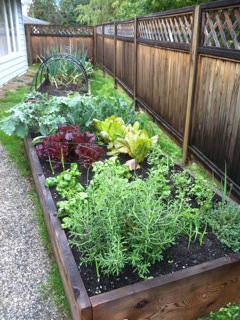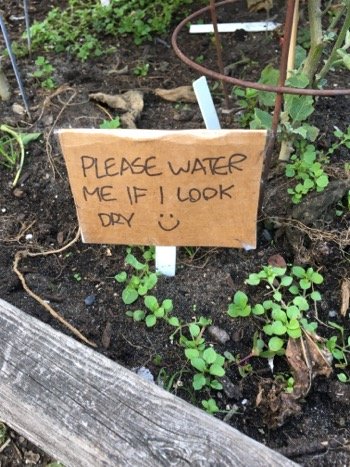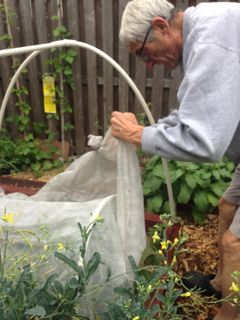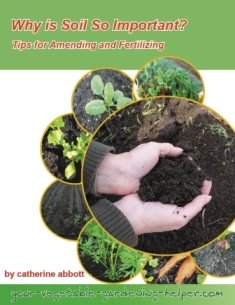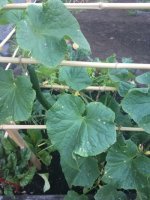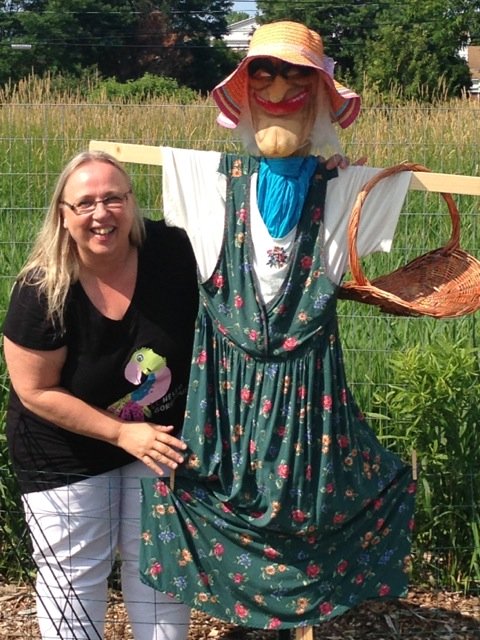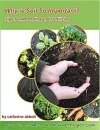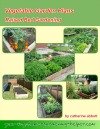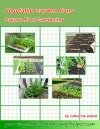Step 5 - Maintain plant growth
It is important to maintain plant growth once you have planted your vegetable seeds and transplants. The best advice I received from a farmer when I was woofing in England was to take the time to walk through my garden and observe.
Every day or two I walk through my garden to check on my veggie plants. Are there are any signs that the plants are not healthy? Any wilting, yellowish leaves, or things are slow growing. I also look for signs of garden insects or other pests like slugs or aphids that can cause damage.
A little bit of damage is alright for most plants, however catching any problems early you can change or adjust watering, weeding, fertilization, and plant protection. Knowing the type of soil you have can give you some indication of what you may need to add to your soil for best plant growth.
Tips for great plant growth:
Watering:
You will need to water often enough to keep your vegetable plant growth steady. Too little will cause your plants to wilt and ultimately kill the root; too much water will drown the roots resulting in the same thing. Check out growing vegetables for more specifics.
Weeding:
A weed is just a plant growing where you do not want it. A lot of what we call weeds are actually very beneficial to our soil and plants. Learn more about this on my page about companion planting.
Even though some weeds can be beneficial keep your seedlings and sprouting seeds free of weeds. They can rob young growing vegetable plants of moisture and nutrients which are vital for good growth.
It is best to pull weeds when they are small and the soil is a bit damp. Never let weeds mature and go to seed. Once a vegetable plant is bigger you can use mulch to help protect them.
Weeding techniques:
- Pulling by hand is the safest way to remove weeds near plants. Pull the weeds when they are small, try to get the whole root.
- Hoeing is best in areas away from the vegetable plant. Keep tools blades sharp.
- Remove the weeds from the garden to the compost. If the weed is flowering or gone to seed it is best to throw them in the garbage or the weed seeds may grow in the compost.
- Using machines (for example rototiller, tractor) are good for large garden areas. They are used to control weeds rather than eliminate them, weeds turned over may grow ba
Fertilizing and Amending:
Vegetable plants need nourishment for proper plant growth. Different soil fertilizers may be needed to give your plants a boost during the growing season. Do this once the plants are established, usually starting 2-4 weeks after planting. See my vegetable garden journal for when and how to fertilize your vegetables.
Some gardeners confuse organic soil fertilizers (used to increase soil fertility)with soil amendments (used to improve soil texture).
Fertilizing techniques:
- Side dressing: Till the dry organic fertilizers into the soil around the plant base, using your hand is probably the easiest or place well rotted compost around the plant base then gently water in both.
- Compost tea or manure tea: fill a bucket or garbage can 1/4 full with compost or manure fill the container with water let this sit at least 24 hours dilute this mixture with water (1 part tea to 2 parts water) water plants with this mixture.
Protection:
During the growing season you can have a variety of weather conditions. Plants may need to be protected from too much heat, cold or frost, wind, pests and larger animals.
Learn the 10 ways I protect my plants.
Trellis and
staking:
Some vegetables grow best if they are trellised or staked for example pole
beans,
snow peas,
tomatoes
and
cucumbers.
By trellising or staking you can save space as well as keep fruits from
touching the soil. Put supports in when planting so as not to disturbs
roots later and train and tie as the plant grows.
Trellis and staking techniques:
- wire cages
- tepees made from bamboo or sticks
- sturdy wooden frames
- tall wooden sticks from wood, metal, bamboo
- plastic pea trellis
- string between sturdy sticks
The next step to planting a vegetable garden is probably the most fun! Learn more about your vegetable harvest.
Return from Step 5 - Maintain Plant Growth to Planting a Vegetable Garden
Recent Articles
-
Tips for disease control in your vegetable garden
Jul 14, 25 11:15 AM
Easy tips for disease control to keep your vegetable growing its best. -
Joy of vegetable Gardening
Jul 14, 25 11:01 AM
Everything you need to know is right here to have Joy of Vegetable Gardening -
Free July Vegetable Garden Checklist
Jun 30, 25 05:24 PM
July Vegetable Garden Checklist: July is a turning point in your garden. Here is my free downloable July Garden To - Do List
